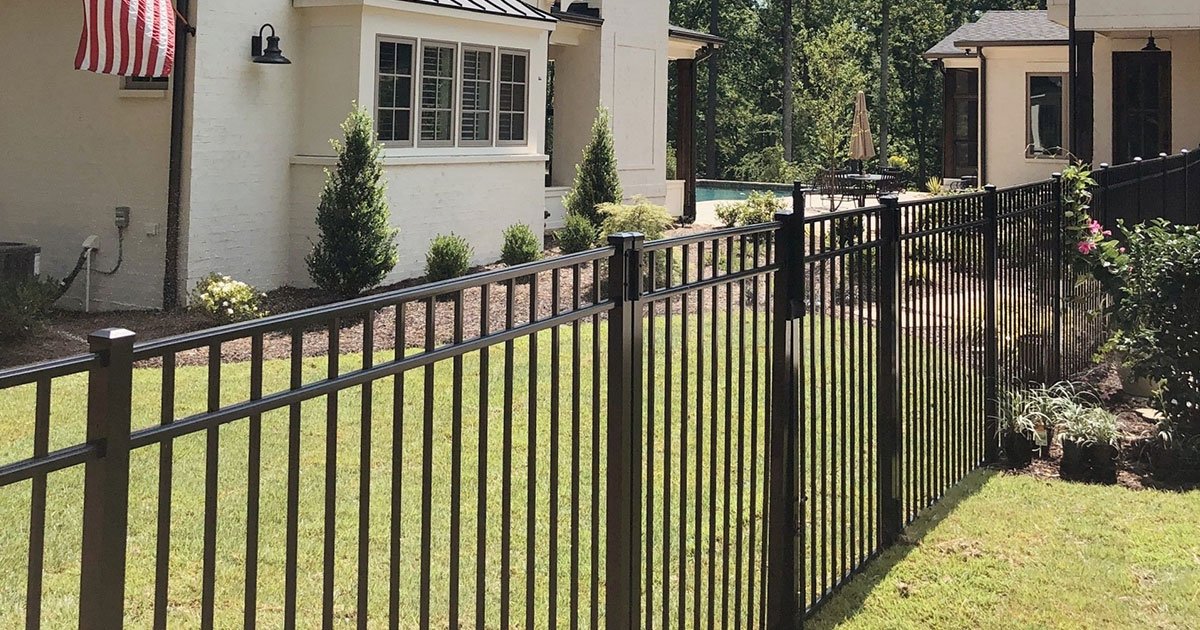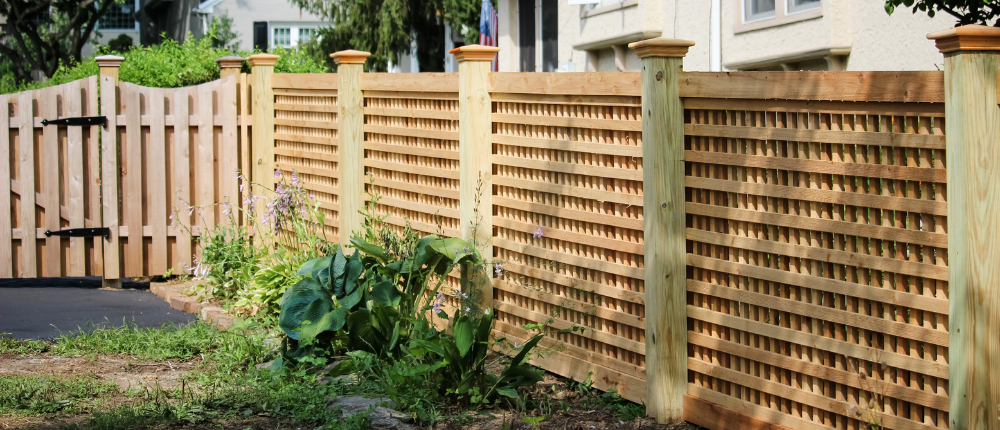All Categories
Featured
Whether it's solid winds, hefty rains, or extreme heat, weather can cause considerable damage to your fencing, leading to costly repairs or even a complete replacement. Below are some functional tips to guard your fencing from weather-related damages.
Plastic Secure Fencing: Plastic is extremely long lasting and immune to dampness, decomposing, and warping. It also requires little upkeep and can stand up to harsh climate condition without fading or breaking. Metal Fence: Wrought iron or aluminum fences are solid and durable versus wind and rainfall. They are susceptible to rust over time if not effectively shielded. Applying a rust-resistant coating can help preserve their look and honesty. Compound Fencing: Made from a mix of timber fibers and plastic, composite fences combine the very best top qualities of both products. They're resistant to rot, decay, and bug damages while offering the look of natural wood. By selecting the right product, you can ensure that your fencing is better geared up to stand up to the aspects.
Moisture Defense: Sealants create a water resistant barrier, protecting against rainfall from seeping into the timber and triggering rot or mildew. UV Security: Sealants and discolorations obstruct UV rays, which can dry and blemish the wood. Protect Appearance: Regularly applying a safety coating will certainly maintain the fencing's all-natural appeal and protect against staining or fading. To ensure long-lasting security, reapply sealer or discolor each to 2 years, relying on your environment and fencing wear.
![]()
![]()
Additionally, cleansing your fencing can assist get rid of dust, mildew, and particles that can cause long-term damage. For wooden fencings, gently stress clean the surface area to remove crud, while plastic fences can be cleaned up with a light detergent solution.
Final thought. Whether you're choosing the right materials, using safety layers, or strengthening posts, these simple strategies can aid secure your fence from the components, conserving you cash and prolonging the life-span of your fencing for years to come. Routine assessments and maintenance are essential to catching problems early, so be certain to stay on top of your fencing's care throughout the seasons.
- Choose Weather-Resistant Materials. Among the very first actions in protecting your fence from weather-related damage is selecting the best product. Some products are normally extra resistant to the elements, lowering the demand for constant repair work. For example:
Plastic Secure Fencing: Plastic is extremely long lasting and immune to dampness, decomposing, and warping. It also requires little upkeep and can stand up to harsh climate condition without fading or breaking. Metal Fence: Wrought iron or aluminum fences are solid and durable versus wind and rainfall. They are susceptible to rust over time if not effectively shielded. Applying a rust-resistant coating can help preserve their look and honesty. Compound Fencing: Made from a mix of timber fibers and plastic, composite fences combine the very best top qualities of both products. They're resistant to rot, decay, and bug damages while offering the look of natural wood. By selecting the right product, you can ensure that your fencing is better geared up to stand up to the aspects.
- Safeguard Wood Fencings with Sealants and Spots. Wooden fencings are particularly vulnerable to moisture, UV rays, and severe temperature levels. With time, these variables can result in decaying, warping, and fading. To protect your timber fence from these concerns, using a top quality timber sealer or discolor is important. Right here's exactly how this assists:
Moisture Defense: Sealants create a water resistant barrier, protecting against rainfall from seeping into the timber and triggering rot or mildew. UV Security: Sealants and discolorations obstruct UV rays, which can dry and blemish the wood. Protect Appearance: Regularly applying a safety coating will certainly maintain the fencing's all-natural appeal and protect against staining or fading. To ensure long-lasting security, reapply sealer or discolor each to 2 years, relying on your environment and fencing wear.

- Enhance the Fence Posts. Fence articles are specifically prone to moving and damaging because of weather problems. Wind, rain, and also freeze-thaw cycles can cause articles to loosen up or lean in time. To avoid this, take into consideration reinforcing your fence posts by setting up concrete grounds or utilizing stronger products for blog post anchors. If you reside in a location with hefty winds or seasonal frost, this included stability will help secure your fence from damage.
- Trim Surrounding Plant Life. Tree branches and vines growing near or over your fence can cause considerable damages in rainy weather condition. Not just will this safeguard your fence, however it will certainly also enhance the general appearance of your yard.
- Use Windbreaks. Wind is a significant aspect in weather-related fencing damages. A windbreak acts as a barrier that decreases the direct impact of wind on the fencing, stopping damage from high winds and gusts.

- Address Drain Issues. Poor water drainage is a major contributor to fence damage, especially for wood fencings. Water that accumulates around the base of fencing articles can cause them to rot over time.
- Regular Assessments and Upkeep. Regular maintenance is important for securing your fencing from weather damages. Examine your fence regularly, specifically after severe climate events, to determine any indications of damage. Search for loose boards, leaning articles, or rust on steel components. Capturing small issues early can prevent them from developing into larger, more pricey repair work.
Additionally, cleansing your fencing can assist get rid of dust, mildew, and particles that can cause long-term damage. For wooden fencings, gently stress clean the surface area to remove crud, while plastic fences can be cleaned up with a light detergent solution.
- Apply a Rust-Resistant Finishing to Metal Fences. Metal fencings, specifically those made of iron or steel, are vulnerable to rust when revealed to moisture and humidity. To protect your metal fence from corrosion, apply a rust-resistant finish or paint. Guarantee that the layer is made for outdoor use and can hold up against the components. Sand them down and repaint the impacted areas to prevent additional corrosion. if you observe any rust areas.
Final thought. Whether you're choosing the right materials, using safety layers, or strengthening posts, these simple strategies can aid secure your fence from the components, conserving you cash and prolonging the life-span of your fencing for years to come. Routine assessments and maintenance are essential to catching problems early, so be certain to stay on top of your fencing's care throughout the seasons.
Latest Posts
Discover Exclusive Auto Repair Specials in Chicago at Montclare Auto Repair
Published en
1 min read
Take Advantage of Special Auto Repair Offers in Chicago at Montclare Auto Repair
Published en
1 min read
Find Outstanding Car Repair Services at Montclare Auto Repair – Drive with Confidence
Published en
1 min read
More
Latest Posts
Discover Exclusive Auto Repair Specials in Chicago at Montclare Auto Repair
Published May 29, 25
1 min read
Take Advantage of Special Auto Repair Offers in Chicago at Montclare Auto Repair
Published May 25, 25
1 min read
Find Outstanding Car Repair Services at Montclare Auto Repair – Drive with Confidence
Published May 24, 25
1 min read